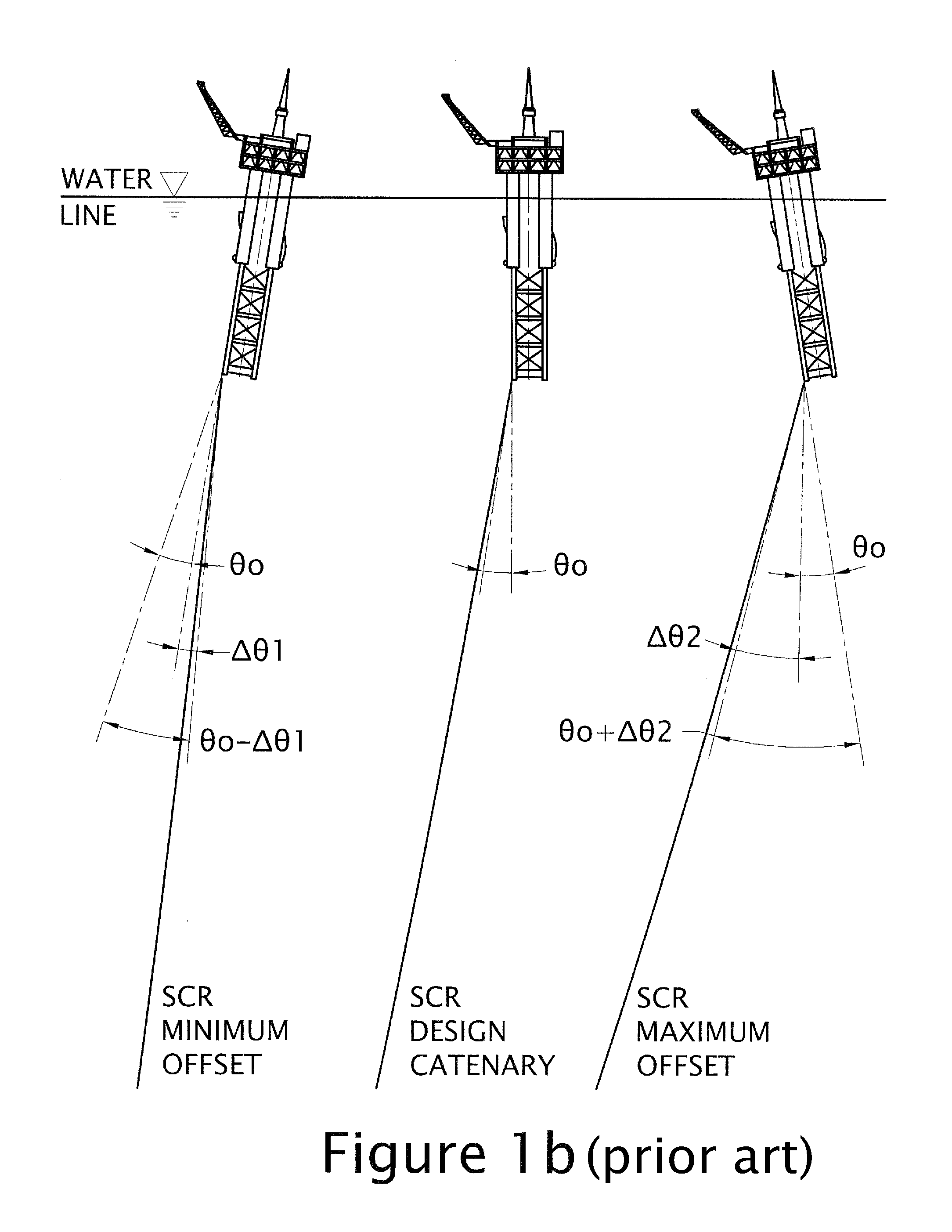Flexible hang-off arrangement for a catenary riser
a flexible, riser technology, applied in the direction of sealing/packing, drilling pipes, well accessories, etc., can solve the problems of limiting the use of flexjoints in particular, high bending loads (and stresses), and high variations in the effective tension at the riser hang-off, so as to reduce the stress, facilitate connection, and compact spool system
- Summary
- Abstract
- Description
- Claims
- Application Information
AI Technical Summary
Benefits of technology
Problems solved by technology
Method used
Image
Examples
Embodiment Construction
[0064]An example of a catenary riser 101 suspended from a truss spar floater platform 103 is shown in FIG. 1a. As the spar surges and pitches, at the riser hang-off location 105 the riser ‘attempts’ to assume in-plane (IP) orientations characterized by dynamic offset angles ranging between in plane angular offsets Δθ1 and Δθ2. The angular offsets Δθ1 and Δθ2 are measured from the tangent to the riser axis at the hang-off of the design catenary of the said riser pertaining to the mean, design location of the platform. The in-plane design hang-off offset angle is angle Oo, see FIG. 1b. FIG. 1b is a detail view from FIG. 1a.
[0065]In addition to surging and pitching floaters also sway, roll, heave and yaw and risers deflect that result in additional out-of-plane and also modifications of the in-plane offset angles in addition to those implied by the surge and pitch. The out-of-plane offsets and those additional in-plane offsets would be routine for those skilled in the field and accord...
PUM
 Login to View More
Login to View More Abstract
Description
Claims
Application Information
 Login to View More
Login to View More - R&D
- Intellectual Property
- Life Sciences
- Materials
- Tech Scout
- Unparalleled Data Quality
- Higher Quality Content
- 60% Fewer Hallucinations
Browse by: Latest US Patents, China's latest patents, Technical Efficacy Thesaurus, Application Domain, Technology Topic, Popular Technical Reports.
© 2025 PatSnap. All rights reserved.Legal|Privacy policy|Modern Slavery Act Transparency Statement|Sitemap|About US| Contact US: help@patsnap.com



